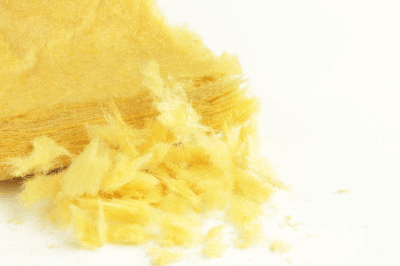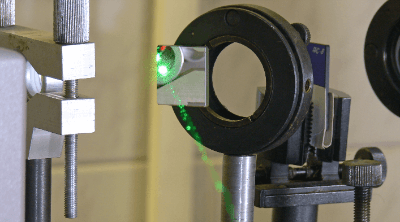What Is a Touchscreen Display?
Touchscreen Display is an electronic component that combines a display as a display device and a touchscreen as an input device, enabling operation by touching the screen. It is a familiar product installed in various devices because it enables easy and intuitive operation by anyone.
In the past, there was a problem that operation was not possible when wearing gloves, etc. However, in recent years, the development and improvement of various methods have almost eliminated such problems.
Applications of Touchscreen Displays
Touch panel displays are very familiar components that permeate our daily lives. For example, smartphones and tablets are always equipped with touch panel displays.
Depending on the intended use, some Touchscreen Displays can be used for both finger input and input with a special pen.
For example, finger input is suitable for simple and fixed operations such as button operation at ATMs, while pen input is suitable for delicate and complex operations such as signing delivery slips.
Principle of Touchscreen Display
The principles that enable input on Touchscreen Displays can be broadly classified into the following
1. Capacitance Method
The capacitance of the human body is detected and its coordinates are returned. A weak electric field is applied to the screen surface, and the current that flows when a finger approaches the panel surface is detected.
2. Resistive Film Method
The resistive film method has a structure in which transparent electrode films are pasted close together, and when the panel surface is pressed down, the electrodes come into contact with each other and an electric current flows. The absolute coordinates of the pressed position are determined by detecting the voltage fluctuation at that time. This is sometimes referred to as the pressure-sensitive type.
3. Infrared Method
An infrared beam parallel to the panel surface detects the position of a finger approaching and blocking the light based on triangulation. Ultrasonic surface acoustic wave: The panel surface is vibrated by ultrasonic waves (surface acoustic waves), and changes in frequency and amplitude are detected when a finger touches it. Electromagnetic induction method: This method detects changes in the electric field generated by electromagnetic induction when the pen approaches, and is characterized by extremely high detection accuracy.
Operability, Visibility, and Thinness
Touchscreen Displays, as typified by smartphones, have become indispensable in modern society, used in ATMs, ticket vending machines, vending machines, car navigation systems, and manufacturing and inspection equipment, to name just a few.
From the standpoint of operability and visibility, here are a few examples. First, a resistive touch panel is laminated onto a liquid crystal display, a configuration widely used in car navigation applications. The operability of the touch panel in this configuration has the following features.
- Detection of touch coordinates is limited to one location (single touch)
- Requires a certain degree of physical pressure
- No conductivity required for the touch means (any gloves can be worn)
Visibility characteristics of the display in the same configuration include the following
- Slightly lower panel transmittance (display brightness)
- Newton rings are easily visible due to the presence of air gaps
In recent years, this resistive film method has been replaced by the projected capacitive method (a type of capacitive method), which has become the mainstream configuration, and its operability features include the following characteristics.
- Detection of multiple coordinates (multi-touch) is possible
- Coordinates are detected simply by bringing a finger close to the panel surface, enabling touchless operation (hover input) with improved sensitivity.
- Capable of inputting a variety of movements (flicking, swiping, pinching out, etc.)
- Touch means must be conductive (limited to wearing gloves, hard to react to fingernails)
Display visibility characteristics in the same configuration include
- High panel transmittance (display brightness)
- Improved visibility due to the absence of air gaps, which suppresses Newton rings and unwanted surface reflections
Such projected capacitive Touchscreen Displays are currently used not only in car navigation systems, but also in various other devices, and mobile devices such as smartphones and tablets are typical examples. As a result of the pursuit of thinner and lighter mobile devices, Touchscreen Displays with the touchscreen function built into the display have also been put to practical use.
The conventional method in which the touch panel is externally attached to the display is called the “out-cell method,” while the method with built-in touch functionality is called the “in-cell method. Along with the shift from the out-cell method to the in-cell method, driver ICs for driving display drivers and touch drivers have been integrated into a single IC, and the number of components and manufacturing processes have been simplified. On the display side, the replacement of LCDs with organic electroluminescent (OLED) displays has resulted in thinner displays with improved visibility and display performance.
Large Touchscreen Displays
As displays become larger, a wide variety of sizes and applications are available. Products that can be attached to TVs and LCD monitors to make them into touch panels have also been introduced.
Large TVs and monitors are highly visible and can be viewed by many people at the same time, even at a distance, so they have been used for a wide range of purposes, including viewing by large groups of people, advertising, and meetings.
The addition of the touch panel functionality can make new and conventional uses even more convenient.
Opportunities for use include use as electronic blackboards in schools, demonstrations at exhibitions, presentations at conferences, and digital signage.
Digital signage is installed in train stations, department stores, etc., and is used for product advertisements and information displays, etc. By using touch panels, interactive communication is possible, such as product explanations and directions, and can be used as a substitute for store clerks and information staff. The ability to accumulate operational data creates new value, such as for use in sales promotions.
Touch Panel and Pen Input
In addition to finger operation, pen operation is also available as an input method for touch panels. There are several types of pens with different input methods.
- Pressure-Sensitive: This system detects pressure when the touch panel is pressed. This method has been used for a long time and has the advantage of reducing operation errors and improving operability because it allows more detailed operation than finger operation.
- Capacitive pen nibs are generally made of silicon rubber or conductive fibers, as they react to static electricity. However, if the pen nib is not of a certain thickness, it may not react due to weak static electricity.
- Capacitance Method (Self-Generating Electrostatic Charge): A built-in battery generates electrostatic charge, allowing for a thinner nib and finer writing. The built-in battery needs to be replaced or recharged.
- Electromagnetic Induction Type: A sensor on the touch panel detects the magnetic field generated by the pen tip. No need for a battery to be built into the pen.

 An aluminum mirror is a type of
An aluminum mirror is a type of